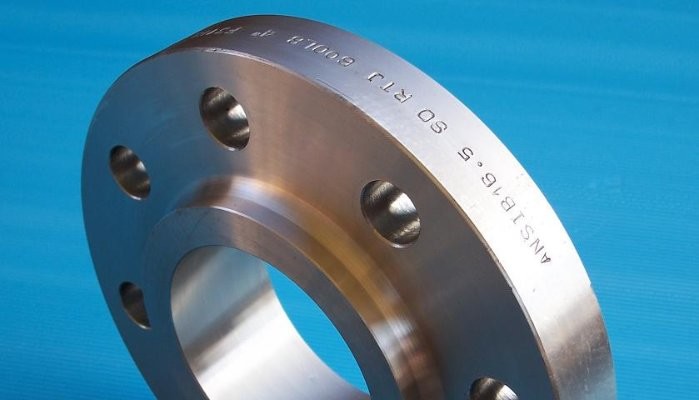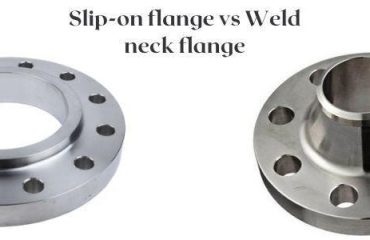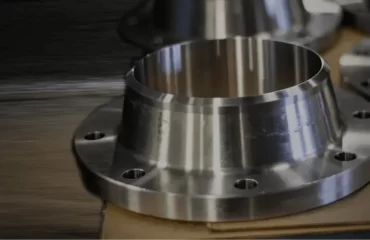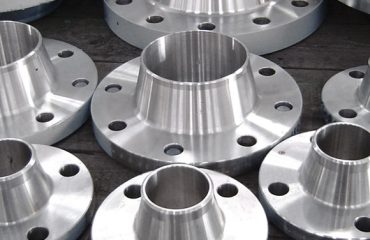
Mặt bích ASTM A182 F316 so với F316L
ASTM A182 là một đặc điểm kỹ thuật tiêu chuẩn cho các mặt bích của hợp kim rèn hoặc cuộn và thép không gỉ, Phụ kiện giả mạo, và van và các bộ phận cho dịch vụ nhiệt độ cao. Trong thông số kỹ thuật này, Hai lớp thường được sử dụng là F316 và F316L, cả hai đều là các biến thể của thép không gỉ austenitic.
Thành phần hóa học
Sự khác biệt chính giữa F316 và F316L là hàm lượng carbon:
| Yếu tố | F316 (% tối đa) | F316L (% tối đa) |
|---|---|---|
| Carbon (C) | 0.08 | 0.03 |
| Mangan (MN) | 2.00 | 2.00 |
| Phốt pho (P) | 0.045 | 0.045 |
| lưu huỳnh (S) | 0.030 | 0.030 |
| Silicon (Và) | 1.00 | 1.00 |
| crom (CR) | 16.00-18.00 | 16.00-18.00 |
| Niken (TRONG) | 10.00-14.00 | 10.00-14.00 |
| Molypden (Mo) | 2.00-3.00 | 2.00-3.00 |
| Nitơ (N) | 0.10 | 0.10 |
Sự khác biệt chính
- Hàm lượng carbon:
- F316: Hàm lượng carbon cao hơn (tối đa 0.08%) So với F316L.
- F316L: Hàm lượng carbon thấp hơn (tối đa 0.03%), làm giảm nguy cơ kết tủa cacbua trong quá trình hàn.
- Tính hàn:
- F316: Hàm lượng carbon cao hơn có thể dẫn đến kết tủa cacbua, có thể gây ăn mòn giữa các hạt ở các khu vực hàn.
- F316L: Hàm lượng carbon thấp giảm thiểu nguy cơ kết tủa cacbua, làm cho nó phù hợp hơn cho các ứng dụng hàn.
- Tính chất cơ học:
- Cả hai lớp đều có tính chất cơ học tương tự, Nhưng F316 có thể có cường độ cao hơn một chút do hàm lượng carbon cao hơn.
Ứng dụng
- F316: Thích hợp cho các ứng dụng nhiệt độ cao và áp suất cao, nơi hàn không phải là mối quan tâm.
- F316L: Ưa thích cho các ứng dụng yêu cầu hàn rộng rãi, chẳng hạn như hệ thống đường ống, xe tăng, và trao đổi nhiệt, Do nguy cơ ăn mòn giữa các hạt thấp hơn.
Các ứng suất cho phép trong ASME B31.3 Đường ống xử lý
ASME B31.3 là Hiệp hội kỹ sư cơ khí Hoa Kỳ’ tiêu chuẩn cho quá trình đường ống, chi tiết thiết kế, nguyên vật liệu, sự chế tạo, cuộc họp, sự kiểm tra, và thử nghiệm hệ thống đường ống. Ứng suất cho phép đối với các vật liệu trong ASME B31.3 được xác định dựa trên tính chất nhiệt độ và vật liệu.
Ứng suất cho phép đối với F316 và F316L
Các giá trị ứng suất cho phép cho mặt bích bằng thép không gỉ F316 và F316L (Cả hai đều có thuộc tính tương tự) Ở các nhiệt độ khác nhau được đưa ra trong ASME B31.3. Dưới đây là các giá trị ứng suất cho phép cho F316 và F316L ở các nhiệt độ khác nhau:
| Nhiệt độ (° C) | Ứng suất cho phép (MPa) |
|---|---|
| 20 | 138 |
| 50 | 138 |
| 100 | 138 |
| 150 | 138 |
| 200 | 124 |
| 250 | 110 |
| 300 | 103 |
| 350 | 93 |
| 400 | 83 |
| 450 | 69 |
Ghi chú:
- Phạm vi nhiệt độ: Khi nhiệt độ tăng, Ứng suất cho phép giảm do giảm cường độ vật liệu ở nhiệt độ cao.
- Yếu tố an toàn: Các giá trị ứng suất cho phép kết hợp một yếu tố an toàn để đảm bảo vật liệu có thể xử lý áp suất được chỉ định mà không bị hỏng.
Phần kết luận
Khi chọn giữa các mặt bích ASTM A182 F316 và F316L, Hãy xem xét các yêu cầu hàn của ứng dụng và nguy cơ ăn mòn giữa các hạt. F316L thường được ưa thích cho các ứng dụng hàn do hàm lượng carbon thấp hơn, làm giảm nguy cơ kết tủa cacbua. Đối với các ứng suất cho phép trong quá trình đường ống, Tham khảo ASME B31.3, cung cấp các giá trị ứng suất phụ thuộc vào nhiệt độ để đảm bảo hoạt động an toàn và đáng tin cậy của các hệ thống đường ống.




Bạn phải đăng nhập để gửi bình luận.